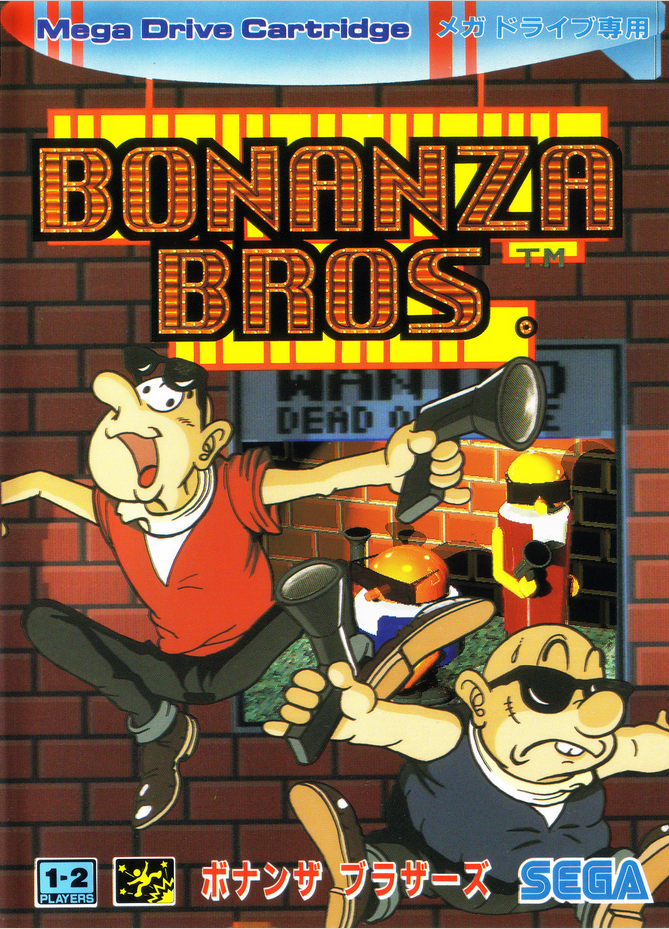

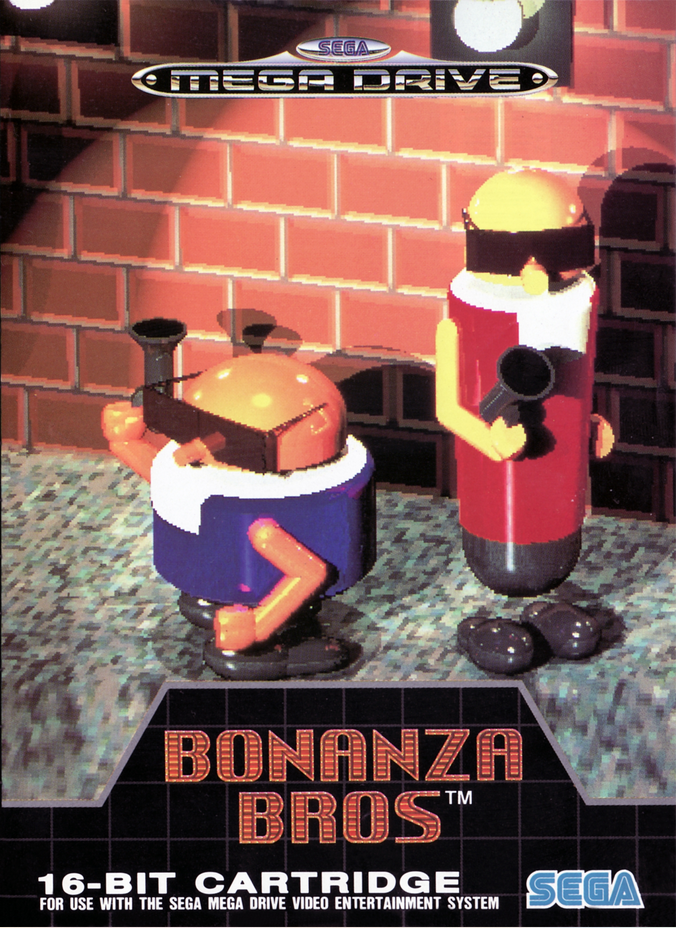
PUBLISHER/DEVELOPER: Sega
RELEASE DATE: 05/17/91 – (JP), 10/1991 – (US), 11/1991 – (EU)
Was Bonanza Bros. ever that popular? I ask because Sega treats the game like royalty. Originally released for arcades in 1990, Bonanza Bros. received ports to just about every console and computer in the early ’90s, save for the NES and Game Boy. Granted, most of these ports were for Japanese or European computers. You know what’s not Japan/Europe exclusive, though? Sega’s numerous Genesis collections they’ve released over the past twenty years for every console/operating system. Purchase any of them and you’ll find Bonanza Bros. nestled snugly between Beyond Oasis and Columns. Oh, what’s that? The Sega Genesis Mini doesn’t have Bonanza Bros. on it? Dry your eyes. Sega generously included the game with the Genesis Mini 2.
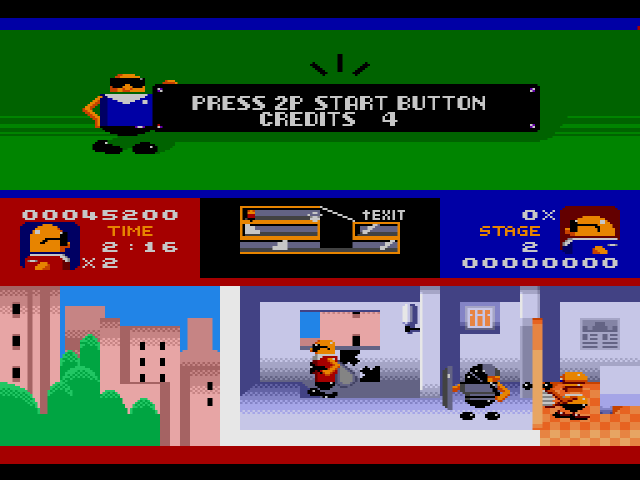
In short: Sega loves Bonanza Bros. and apparently they think that their audience loves it too. Assuming the latter is actually true, I must confess then that I’m an anomaly within Sega’s fan base. I do not love or even like Bonanza Bros. The grotesque character designs, slow-paced gameplay, and awkward mechanics all make for a wholly unpleasant experience, one that I’m surprised Sega celebrates.
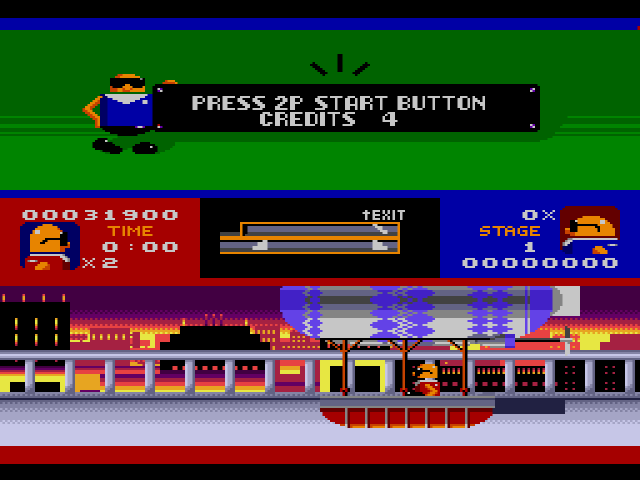
One-to-two players control Spike and Mike (Robo and Mobo in other territories), a pair of “private investigators” tasked with helping a wealthy businessman test his security forces. Seems that the businessman’s properties have seen a lot of theft lately, and he wants to make sure the security he’s hired are fit for their jobs. Spike and Mike’s assignment is to try and steal certain items from the businessman’s properties. If the brothers can complete their assignments, the businessman promises that their “reward will make Fort Knox look like pocket change.” According to the American instruction manual, at least.
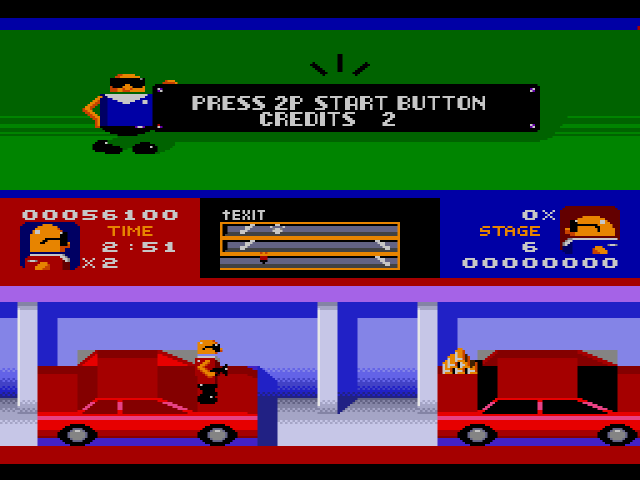
I could expose the narrative’s plot holes for the rest of the review (Spike and Mike are thieves in the Europe/Japan releases and this simple change makes a lot more sense), but the nonsensical story is the least of Bonanza Bros.‘ transgressions.
Let’s start with the character design. The Saturday morning cartoon versions of the Bonanza Brothers rendered on the Japanese and Western box art are generic, but inoffensive. Still, I’ll take Hanna Barbera-lite any day over the truly hideous in-game pseudo-cubist design. I can’t help it: Mike, Spike, and the security guards look and move like unsettling bulbous marionettes pretending to be real boys. I often found myself watching the on-screen map as much as I could, just to avoid looking at the characters.
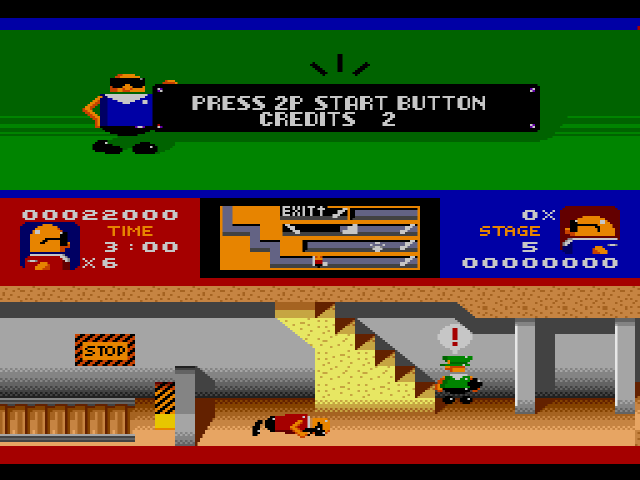
Each of the game’s ten levels are non-linear multi-story environments, like a casino, a jewelry store, or an ocean liner. Expensive blinking items are placed throughout each level, and it’s Mike/Spike’s job to recover them without being bludgeoned by a security guard’s night stick. You’re given three minutes to recover all the items, which would be a lot of time if the game didn’t want you to progress slowly and stealthily through its many corridors. Since the goal is not to get caught, and since the businessman’s “security forces” are legion, the time limit is often just enough time to find the goods and hightail it to the exit.
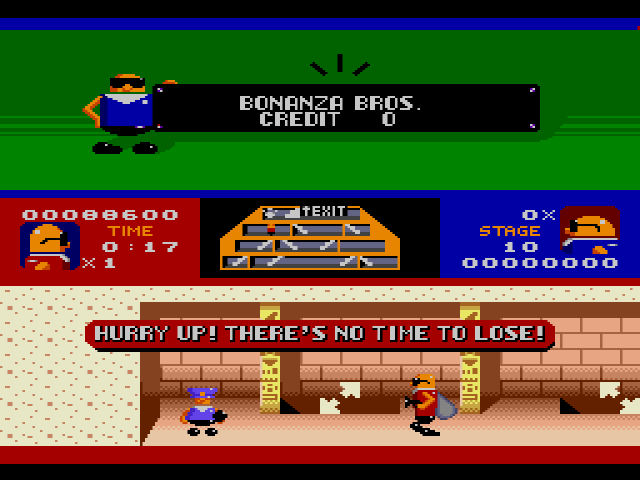
Mike and Spike’s movements are a mixed bag. In theory, they’re able to walk, jump, hug a wall, shoot a stun gun, and open doors. Walking and hugging walls usually works just fine, but shooting and opening doors often comes with lag. The inability to open a door quickly is a problem when you’re being chased by several guards in riot gear; ditto shooting at guards that spot you. Jumping is a wild card. Sometimes I could jump over obstacles and bullets with exquisite grace. Other times, I leapt clumsily into the very same obstacles I was trying to avoid.

In Bonanza Bros., you find the blinking trinkets, avoid the guards, watch the time limit, and find the exit. The game is deliberately slow-paced, which makes sense; Mike and Spike are thieves sneaking around, not high-school runners trying to impress their coach. Methodical movements are necessary, yet the inclusion of a timer forces you to hurry. Again, Sega does give you enough time for each level, but only just enough. Hurry to collect everything, but not too fast or you’ll get caught. Not too slow or you won’t reach the exit in time.
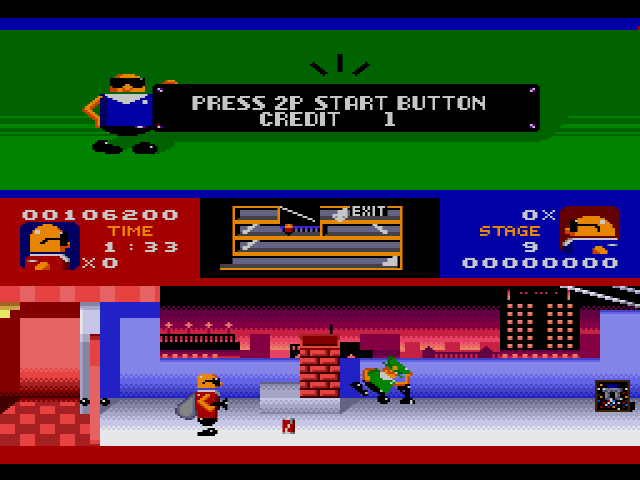
Perhaps this unique slow/fast juxtaposition is one of the reasons why Bonanza Bros. remains so iconic, but I can’t embrace it. Without the time limit, there is little challenge. And without the Bonanza Brothers inability to run or even walk quickly, the time limit means nothing. Move slowly as quickly as possible. No sir, I don’t like it.
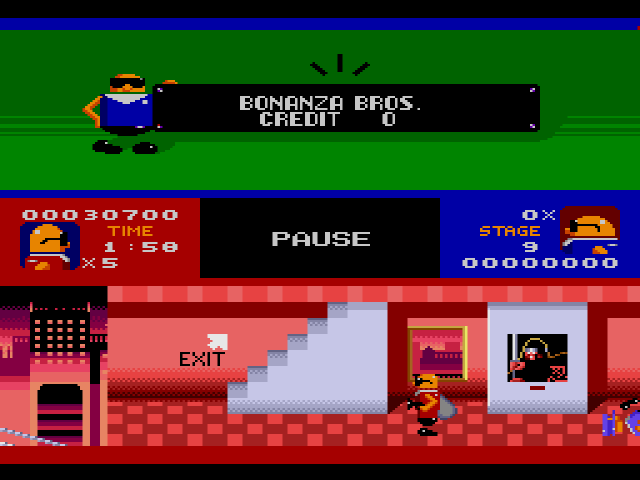
One bright spot: the music is far too good for this double-minded game. Koichi Namiki is credited as composer for the arcade version. Not sure if he crafted the Genesis port’s soundtrack as well, but whoever did deserves all the props.
The Genesis port of Bonanza Bros. is currently available to play on every modern platform, including the PS5, Xbox Series X, PS4, Xbox One, Switch, and Steam. Since companies tend to only re-release games that continuously make them money, this means that Bonanza Bros. brings in a reasonable amount of money for Sega, over thirty years after its original release. I don’t need to understand why the game remains so popular, but after suffering through what has to be my least favorite Sega arcade port, I wish I did.
D+

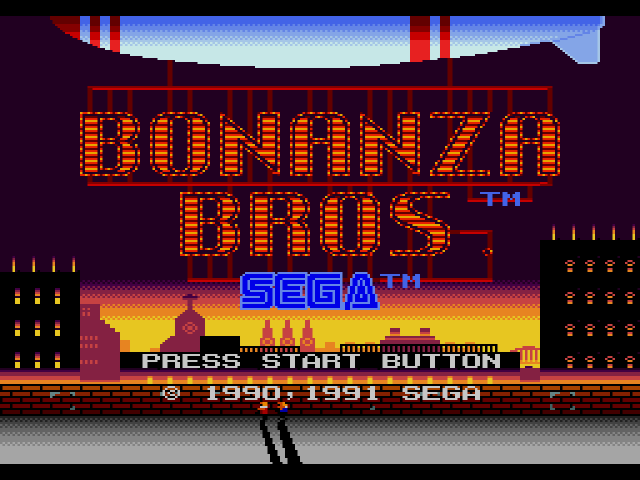
3 replies on “Bonanza Bros (Genesis, 1991)”
This game seems to be designed as a 2 player experience and looks like it would be fun to play with a friend. Doesn’t look as fun for just a single player.
Supposedly, the game is quite easy as a two-player experience, but you can bump up the difficulty in the options menu. In a way, it reminds me of Spy Vs. Spy, except co-op instead of competitive.
I beg to differ…It’s quite fun. (Mostly because I have nobody to scream my lungs out at, and vice versa.)